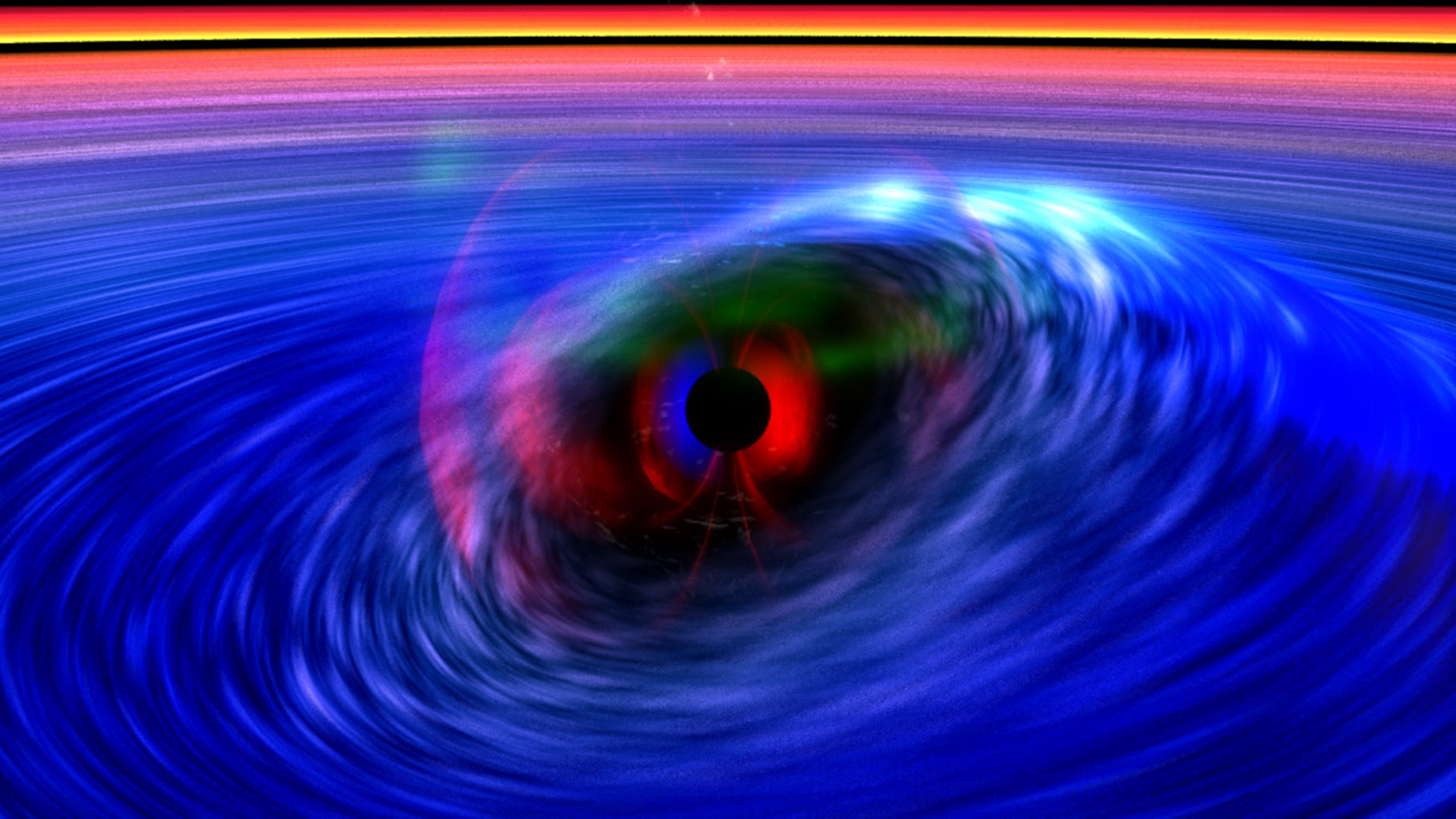Black Holes: Everything You Think You Know Is Wrong

If most people know one thing about black holes, they probably know that nothing can escape from them, not even light.
Yet this most basic tenet about black holes has actually been disproven by the theory of quantum mechanics, explains theoretical physicist Edward Witten of the Institute for Advanced Study in Princeton, NJ, in an essay published online today (Aug. 2) in the journal Science.
Black holes, in the classical picture of physics, are incredibly dense objects where space and time are so warped that nothing can escape from their gravitational grasp. In another essay in the same issue of Science, theoretical physicist Kip Thorne of Caltech describes them as "objects made wholly and solely from curved spacetime."
Yet this basic picture appears to contradict the laws of quantum mechanics, which govern the universe's tiniest elements.
"What you get from classical general relativity, and also what everyone understands about a black hole, is that it can absorb anything that comes near, but it can't emit anything. But quantum mechanics doesn't allow such an object to exist," Witten said in this week's Science podcast.
In quantum mechanics, if a reaction is possible, the opposite reaction is also possible, Witten explained. Processes should be reversible. Thus, if a person can be swallowed by a black hole to create a slightly heavier black hole, a heavy black hole should be able to spit out a person and become a slightly lighter black hole. Yet nothing is supposed to escape from black holes. [Photos: Black Holes of the Universe]
To solve the dilemma, physicists looked to the idea of entropy, a measurement of disorder or randomness. The laws of thermodynamics state that in the macroscopic world, it's impossible to reduce the entropy of the universe — it can only increase. If a person were to fall into a black hole, entropy would increase. If the person were to pop back out of it, the universal entropy tally would go down. For the same reason, water can spill out of a cup onto the floor, but it won't flow from the floor into a cup.
Breaking space news, the latest updates on rocket launches, skywatching events and more!
This principle seems to explain why the process of matter falling into a black hole cannot be reversed, yet it only applies on a macroscopic level.
Physicist Stephen Hawking famously realized that on the microscopic, quantum mechanical level, things can escape from black holes. He predicted that black holes will spontaneously emit particles in a process he dubbed Hawking radiation. Thus, quantum mechanics refuted one of the basic tenets of black holes: that nothing can escape.

"Although a black hole will never emit an astronaut or a table or a chair, in practice, it can definitely emit an ordinary elementary particle or an atom," Witten explained.
However, scientists have yet to observe Hawking radiation.
"Unfortunately, the usual astrophysical black holes, formed from stellar collapse or in the centers of galaxies, are much too big and too far away for their microscopic details to be relevant," Witten wrote.
Witten's essay is one of five new papers in Science this week summarizing the state of black hole research.
Follow Clara Moskowitz on Twitter @ClaraMoskowitz or SPACE.com @Spacedotcom. We're also on Facebook & Google+.
Join our Space Forums to keep talking space on the latest missions, night sky and more! And if you have a news tip, correction or comment, let us know at: community@space.com.

Clara Moskowitz is a science and space writer who joined the Space.com team in 2008 and served as Assistant Managing Editor from 2011 to 2013. Clara has a bachelor's degree in astronomy and physics from Wesleyan University, and a graduate certificate in science writing from the University of California, Santa Cruz. She covers everything from astronomy to human spaceflight and once aced a NASTAR suborbital spaceflight training program for space missions. Clara is currently Associate Editor of Scientific American. To see her latest project is, follow Clara on Twitter.
